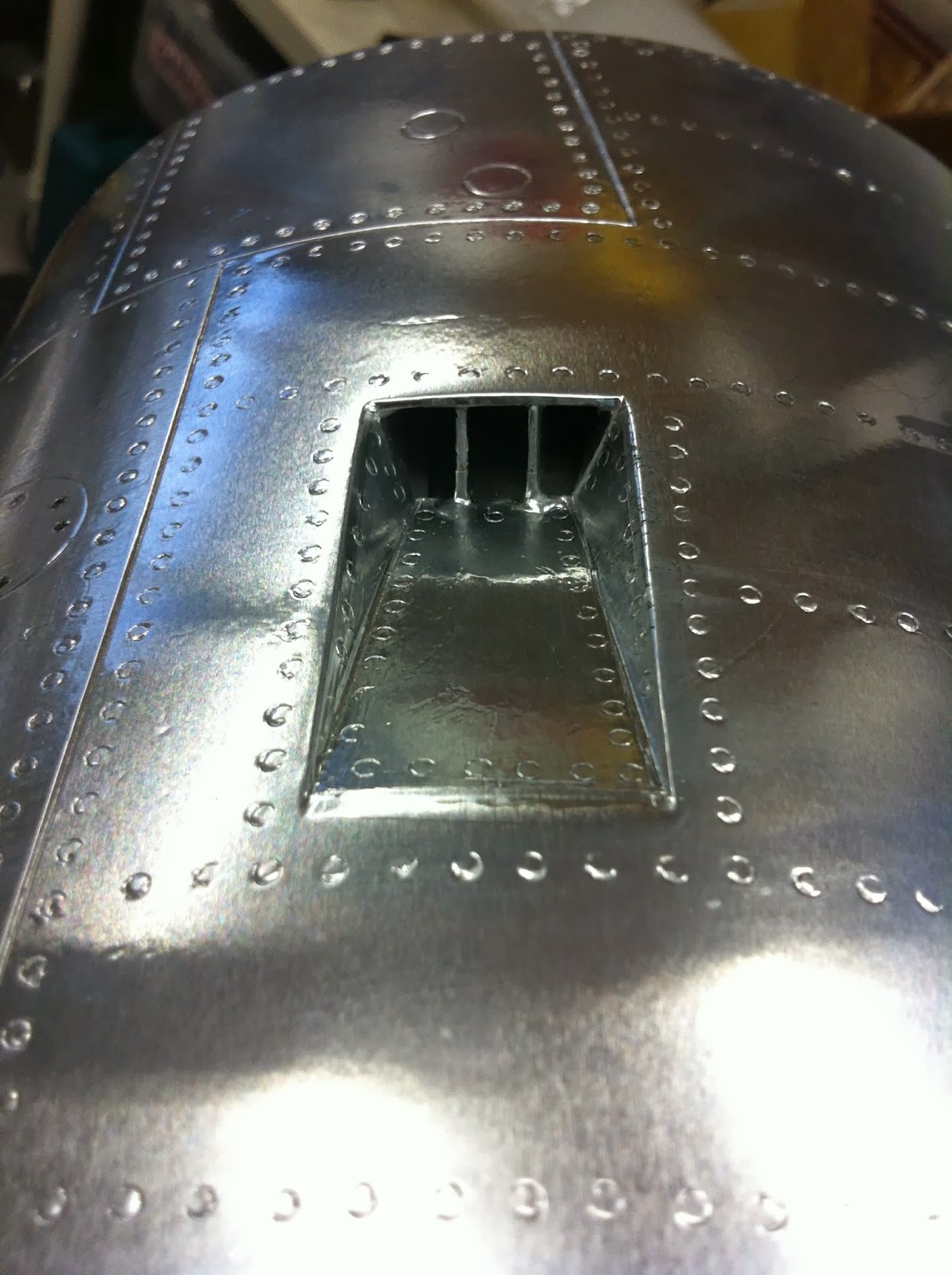The Starfighter has what is known as a ventral fin and the back half of this fin is fiberglass. This is the TACAN / IFF antenna.
To simulate this I have put some fiberglass cloth on the part in the correct location and then painted it with a translucent water based paint to simulate the unpainted look of the real thing.
After waiting about 90 days for a special little countersink tool I was finally able to attach the lenses to the fuse with the little countersink bolts.
Here is a view of the light with my wife holding a flashlight inside the fuse for the effect. Later I will be adding the LED to each of the lens.
The wing tip on the model is much thicker than the real wing for lift purposes and for this reason the lights which are 1/5 scale to the full size will not look correct but they would look even worse if I made the fit the model wing the way the full size on fits onto the wing. Again it may be a waste of time but I will try to make it look decent for static purposes.
The Starfighter was also flown without the tip tanks. When this was done there was a light on the tip of each wing as per all aircraft red for the port side and green for the starboard. I will never fly this plane without the tip tanks but for static I have decided to cap the wing tips and put on the appropriate light. You can see in this picture the actual full size lights.
I have made a small wooden plug for the lights and cast the mold out of latex plastic. Now I will pour acrylic plastic into the mold after I have died the liquid acrylic red and green.






.JPG)

.JPG)
.JPG)







